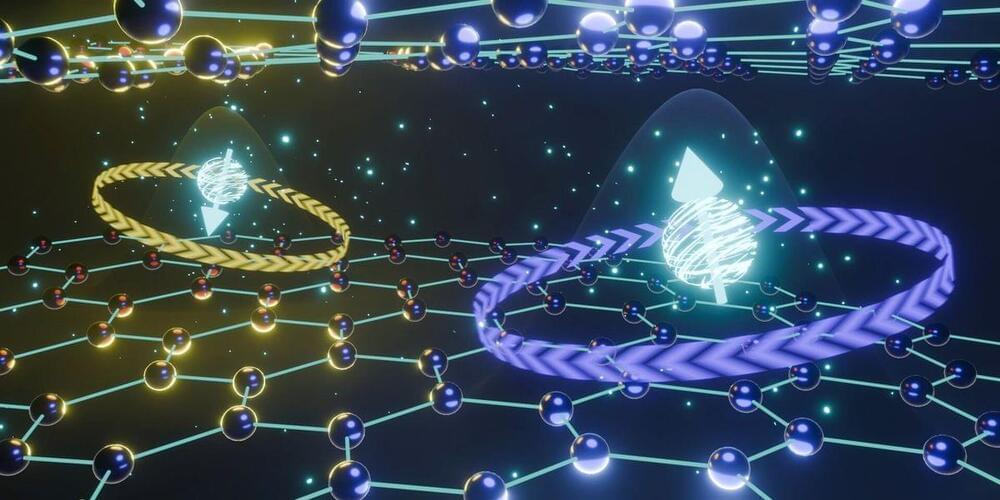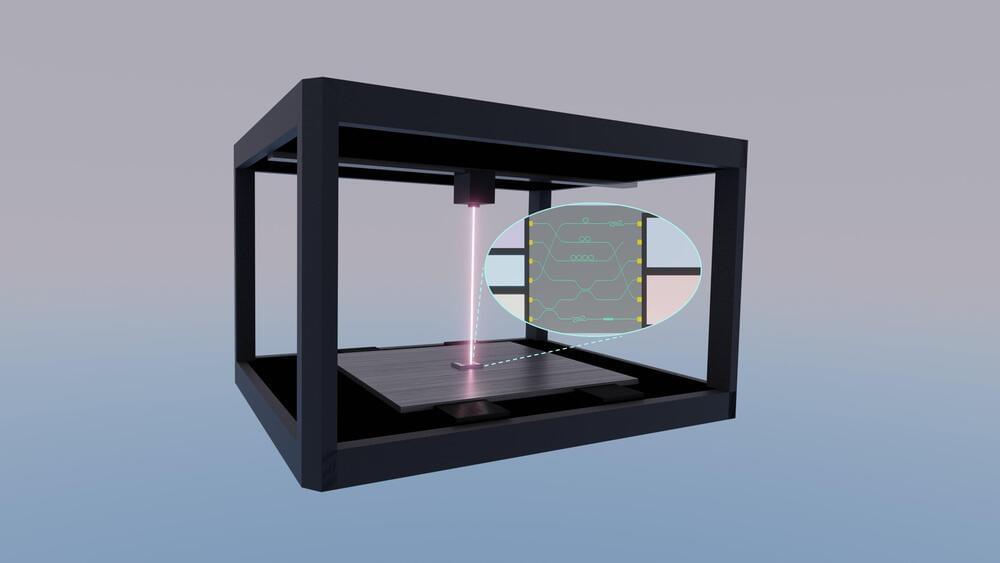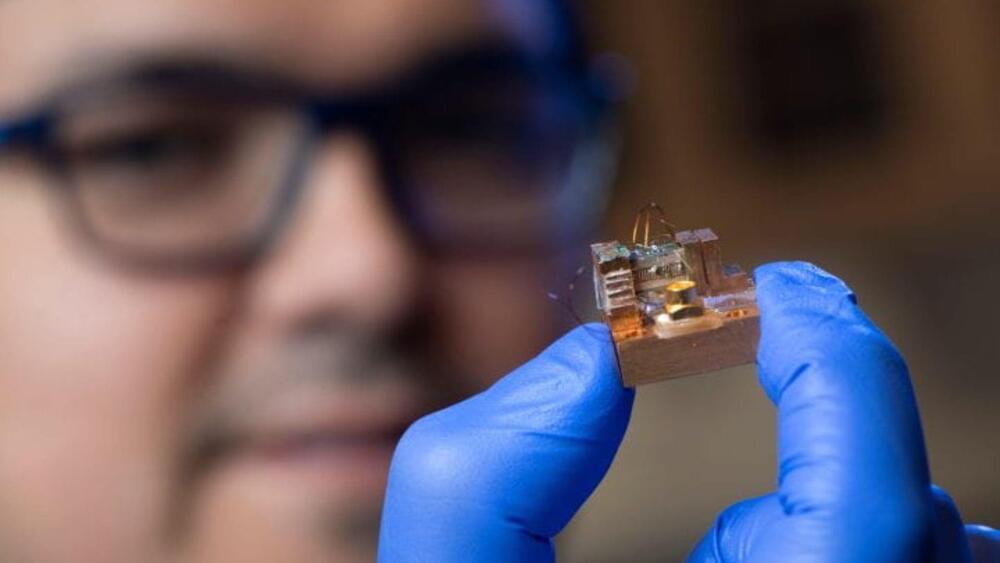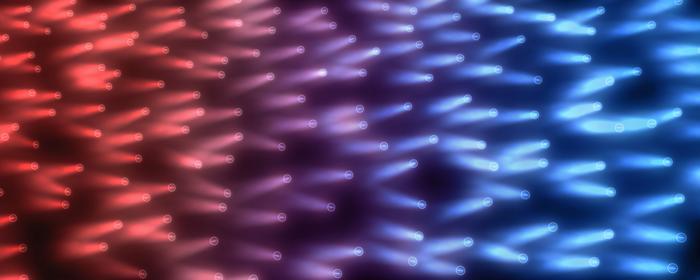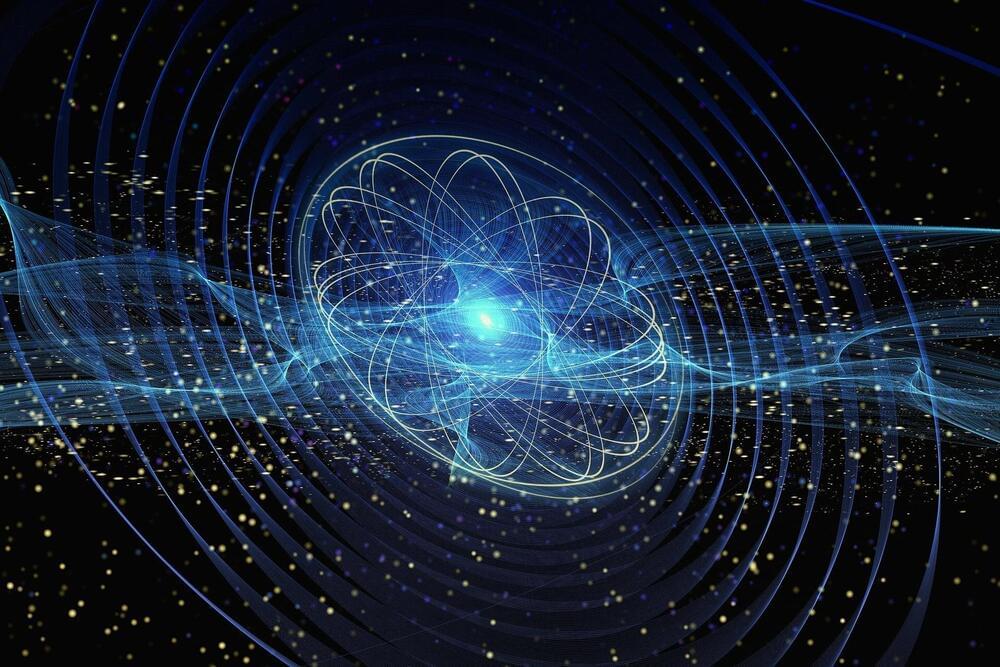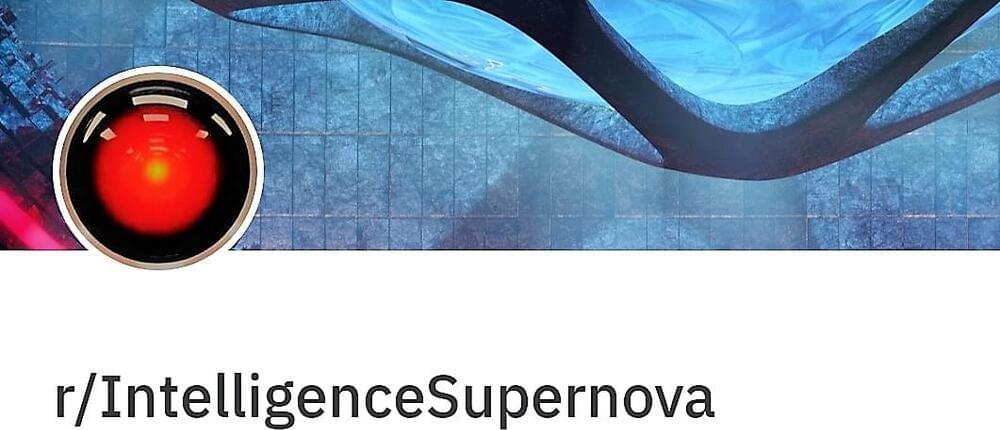Archive for the ‘quantum physics’ category: Page 116
Feb 3, 2024
Team develops a laser printer for photonic chips
Posted by Dan Breeden in categories: biotech/medical, health, internet, quantum physics, robotics/AI
Photonic integrated circuits are an important next-wave technology. These sophisticated microchips hold the potential to substantially decrease costs and increase speed and efficiency for electronic devices across a wide range of application areas, including automotive technology, communications, health care, data storage, and computing for artificial intelligence.
Photonic circuits use photons, fundamental particles of light, to move, store, and access information in much the same way that conventional electronic circuits use electrons for this purpose. Photonic chips are already in use today in advanced fiber-optic communication systems, and they are being developed for implementation in a broad spectrum of near-future technologies, including light detection and ranging, or LiDAR, for autonomous vehicles; light-based sensors for medical devices; 5G and 6G communication networks; and optical and quantum computing.
Given the broad range of existing and future uses for photonic integrated circuits, access to equipment that can fabricate chip designs for study, research and industrial applications is also important. However, today’s nanofabrication facilities cost millions of dollars to construct and are well beyond the reach of many colleges, universities, and research labs.
Feb 3, 2024
Tiny ‘bending station’ transforms everyday materials into quantum conductors
Posted by Gemechu Taye in categories: quantum physics, supercomputing
Using this technique, even a non-conducting material like glass could be turned into a conductor some day feel researchers.
A collaboration between scientists at the University of California, Irvine (UCI) and Los Alamos National Laboratory (LANL) has developed a method that converts everyday materials into conductors that can be used to build quantum computers, a press release said.
Computing devices that are ubiquitous today are built of silicon, a semiconductor material. Under certain conditions, silicon behaves like a conducting material but has limitations that impact its ability to compute larger numbers. The world’s fastest supercomputers are built by putting together silicon-based components but are touted to be slower than quantum computers.
Continue reading “Tiny ‘bending station’ transforms everyday materials into quantum conductors” »
Feb 3, 2024
170-year-old Physical Law Unexpectedly Holds True in High-Temperature Superconductors
Posted by Dan Breeden in categories: computing, quantum physics
The physicists found that if electron transport alone is taken into account, the cuprates’ Lorenz number – their ratio of thermal conductivity to electrical conductivity divided by temperature – approaches the value predicted by the Wiedemann-Franz law. The team suggest that other factors, such as lattice vibrations (or phonons), which are not included in the Hubbard model, could be responsible for discrepancies observed in experiments on strongly correlated materials that make it appear as if the law does not apply. Their results could help physicists interpret these experimental observations and could ultimately lead to a better understanding of how strongly correlated systems might be employed in applications such as data processing and quantum computing.
The team now plans to build on the result by exploring other transport channels such as thermal Hall effects. “This will deepen our understanding of transport theories in strongly correlated materials,” Wang tells Physics World.
The present study is published in Science.
Feb 3, 2024
In a ‘Dark Dimension,’ Physicists Search for Missing Matter
Posted by Dan Breeden in categories: cosmology, quantum physics
An idea derived from string theory suggests that dark matter is hiding in a (relatively) large extra dimension. The theory makes testable predictions that physicists are investigating now.
A physicist’s wild romp through the multiverse probes space-time, string theory, and everything in between.
Melanie Frappier [email protected] Authors Info & Affiliations
Science.
Feb 2, 2024
A physical qubit with built-in error correction
Posted by Dan Breeden in categories: computing, information science, quantum physics
There has been significant progress in the field of quantum computing. Big global players, such as Google and IBM, are already offering cloud-based quantum computing services. However, quantum computers cannot yet help with problems that occur when standard computers reach the limits of their capacities because the availability of qubits or quantum bits, i.e., the basic units of quantum information, is still insufficient.
One of the reasons for this is that bare qubits are not of immediate use for running a quantum algorithm. While the binary bits of customary computers store information in the form of fixed values of either 0 or 1, qubits can represent 0 and 1 at one and the same time, bringing probability as to their value into play. This is known as quantum superposition.
This makes them very susceptible to external influences, which means that the information they store can readily be lost. In order to ensure that quantum computers supply reliable results, it is necessary to generate a genuine entanglement to join together several physical qubits to form a logical qubit. Should one of these physical qubits fail, the other qubits will retain the information. However, one of the main difficulties preventing the development of functional quantum computers is the large number of physical qubits required.
Feb 2, 2024
Sub-Wavelength Light Confinement Demonstrated in New III-V Semiconductor Nanocavity
Posted by Genevieve Klien in categories: computing, nanotechnology, quantum physics
New nanocavities pave the way for enhanced nanoscale lasers and LEDs that could enable faster data transmission using smaller, more energy-efficient devices.
As we transition to a new era in computing, there is a need for new devices that integrate electronic and photonic functionalities at the nanoscale while enhancing the interaction between photons and electrons. In an important step toward fulfilling this need, researchers have developed a new III-V semiconductor nanocavity that confines light at levels below the so-called diffraction limit.
“Nanocavities with ultrasmall mode volumes hold great promise for improving a wide range of photonic devices and technologies, from lasers and LEDs to quantum communication and sensing, while also opening up possibilities in emerging fields such as quantum computing,” said the leading author Meng Xiong from the Technical University of Denmark. “For example, light sources based on these nanocavities could significantly improve communication by enabling faster data transmission and strongly reduced energy consumption.
Feb 2, 2024
GeoMindGPT: Navigating the Convergence of Human and Artificial Minds in the Cybernetic Era
Posted by Shubham Ghosh Roy in categories: quantum physics, robotics/AI, singularity, transhumanism
GeoMindGPT, a customized version of ChatGPT, powered by GPT-4, is p ioneering the frontier of AI-assisted understanding of complex scientific and philosophical concepts with a special focus on Global Superintelligence, Technological Singularity, Transhumanism & Posthumanism, Consciousness Studies, Quantum Gravity, Simulation Metaphysics.
Feb 2, 2024
How could this new type of room-temperature qubit usher in the next phase of quantum computing?
Posted by Shailesh Prasad in categories: computing, quantum physics
The qubit attained quantum coherence for 100 nanoseconds, which an expert described as an “important milestone” in quantum computing research.
